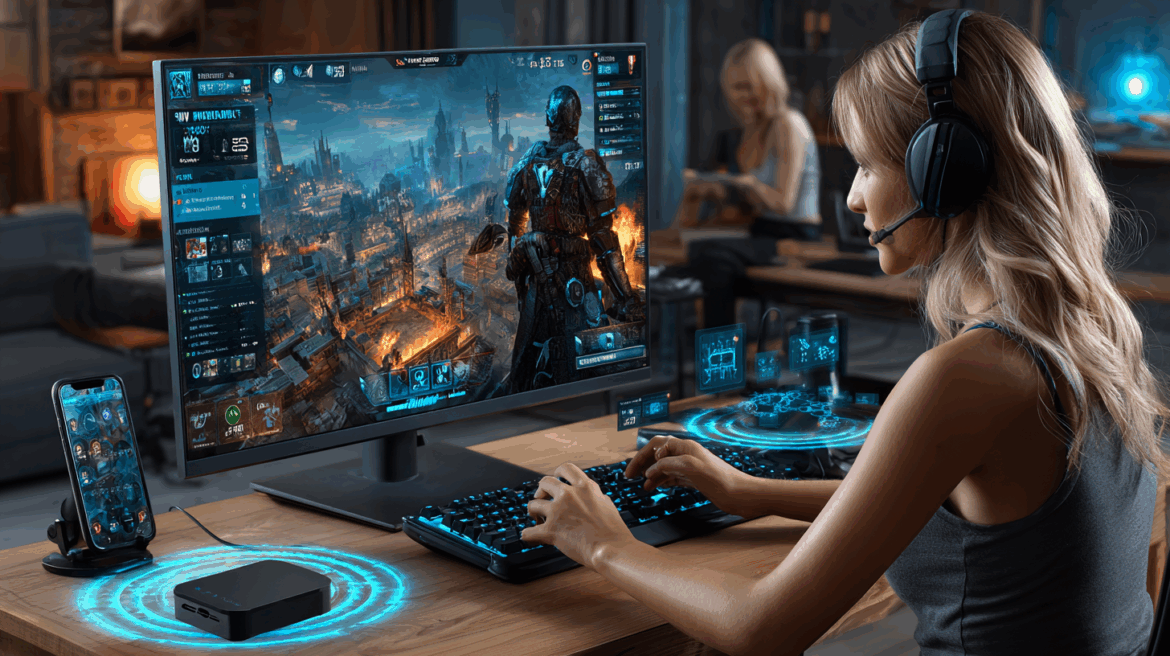Online gaming demands a fast, stable connection, but if you’re using a mesh Wi-Fi system, you might encounter high latency—those frustrating lags, rubber-banding, or delays that ruin your gaming experience. Whether you’re playing fast-paced shooters or strategy games, latency (measured as ping in milliseconds) needs to stay low (under 50 ms) for smooth gameplay. With my extensive IT background, I’ve helped many gamers tackle this issue, and I’m here to share clear, step-by-step instructions to troubleshoot and reduce high latency on your mesh network, getting you back to winning streaks.
Mesh systems distribute Wi-Fi across multiple nodes, which is great for coverage but can introduce latency if not optimized. Causes include interference, node placement, or bandwidth competition. Let’s dive into the fixes together.
Why High Latency Happens in Gaming
High latency on a mesh network can result from:
- Interference: Nearby devices (e.g., microwaves) or neighboring Wi-Fi can disrupt signals.
- Node distance: A gaming device far from a node may experience weaker backhaul.
- Bandwidth sharing: Other devices (e.g., streaming TVs) can hog the network.
- Firmware issues: Outdated software can slow performance.
Identifying these factors helps us target the right solutions. Here’s how to proceed.
Step-by-Step Guide to Reduce Latency
Follow these steps to troubleshoot high latency for gaming on your mesh network. Each step is designed to be easy to follow, even for non-tech-savvy gamers.
Step 1: Measure Your Latency
Start by checking your current ping.
- Run an in-game test: In your game (e.g., Call of Duty, Fortnite), go to the network settings or stats menu to view ping (aim for under 50 ms).
- Use a tool: Open a browser on your gaming device and visit Speedtest.net, noting the ping value.
- Test while moving: Walk around with the device to see if latency spikes in certain areas.
Step 2: Optimize Node Placement
Position nodes to minimize distance and interference.
- Locate the node: Use your mesh app (e.g., Eero, Netgear Orbi) to find the node nearest your gaming setup (e.g., console, PC).
- Move closer: Place the node within 10-15 feet of the gaming device, avoiding walls, metal furniture, or appliances.
- Elevate it: Position the node on a shelf or desk (3-5 feet high) for a clearer signal.
- Retest: Check ping in-game after adjusting.
Step 3: Prioritize Gaming Device with QoS
Quality of Service (QoS) reserves bandwidth for gaming.
- Access QoS settings: In the mesh app, go to “QoS,” “Traffic Prioritization,” or “Device Priority.”
- Add your device: Select your gaming console or PC and set it to high priority or the top slot.
- Save and test: Apply changes, wait 1-2 minutes, and check ping during gameplay.
Step 4: Switch to the 5 GHz Band
The 5 GHz band offers lower latency due to less interference.
- Check device support: Ensure your gaming device supports 5 GHz (most modern consoles and PCs do).
- Enable 5 GHz: In the mesh app, go to Wi-Fi settings and prioritize or force the 5 GHz band. If bands are combined, use “Band Steering” to push the device to 5 GHz.
- Stay close: Keep the device within 10-15 feet of the node, as 5 GHz has a shorter range.
- Retest ping: Play a match to confirm reduced latency.
Step 5: Change Wi-Fi Channels
Reduce interference from neighboring networks.
- Scan for congestion: Use a Wi-Fi analyzer app (e.g., WiFi Analyzer) to identify crowded channels on 5 GHz (e.g., 36 or 40).
- Adjust channel: In the mesh app or router settings (e.g., 192.168.1.1), set the 5 GHz band to a less used channel (e.g., 44 or 149).
- Save and retest: Apply the change, wait for the network to update, and check ping in-game.
Step 6: Limit Background Device Usage
Prevent other devices from increasing latency.
- Check connected devices: In the mesh app, view the “Devices” section and note active users (e.g., smart TVs, phones).
- Pause non-gaming devices: Turn off or pause devices not in use during gaming via the app.
- Test again: Play a game to ensure latency stays low.
Step 7: Update Firmware
Outdated firmware can cause performance lags.
- Check for updates: Open the mesh app and go to “Settings” or “Device Management” to look for firmware updates.
- Install updates: Follow prompts to download and apply the update (takes 5-10 minutes). Avoid unplugging during this process.
- Restart: Reboot the system after updating and wait 2-3 minutes.
- Retest: Check ping in-game to confirm improvement.
Step 8: Contact ISP or Adjust Wired Option
If latency persists, check your internet or consider a wired connection.
- Check with ISP: Call your internet provider to verify your plan supports low latency (e.g., fiber plans often perform better than DSL).
- Use Ethernet: If possible, connect your gaming device to the router or a node with an Ethernet cable for the lowest latency.
- Monitor: Test gameplay after any changes.
Preventing Future Latency Issues
- Game during off-peak: Avoid peak internet usage times (e.g., evenings) when others are online.
- Regular updates: Check firmware monthly to maintain performance.
- Minimize interference: Keep gaming areas free of cordless phones or microwaves.
Learn More with My Book
For a deeper dive into optimizing mesh networks for gaming, including latency fixes, explore my book, Wi-Fi Made Simple: A Beginner’s Guide to Mesh Networks. It offers practical advice in plain language to enhance your gaming setup. Get your copy on Amazon today and dominate your next match! Buy now on Amazon

Leave a Reply
You must be logged in to post a comment.